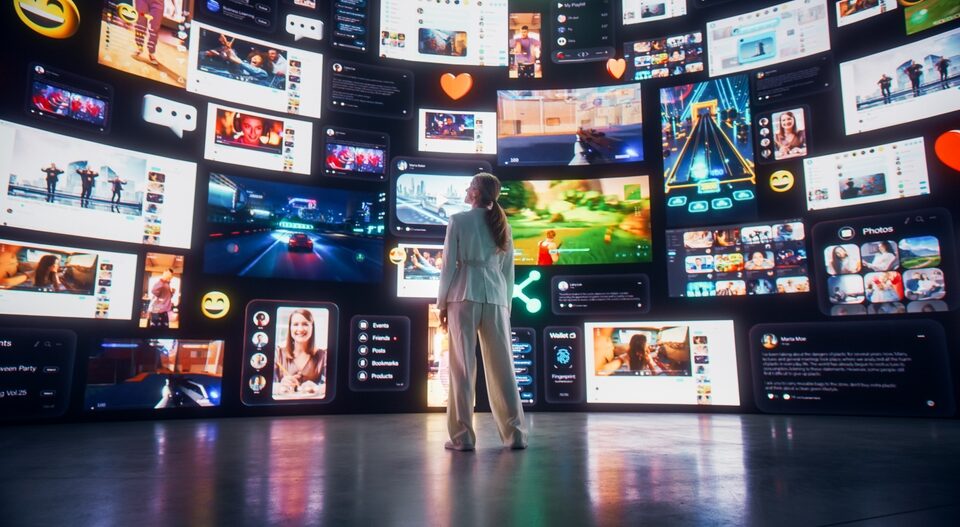Business as we know it is going through a wild transformation. You can feel it, right? The ground underneath traditional strategy and competitive thinking is shifting. At the heart of it all is one simple idea: we’re moving from an economy built on scarcity to one thriving on abundance. That’s a huge deal. The old rules, the ones that told us to hoard resources, guard intel, and chase market share like dogs with bones? They’re crumbling. Fast.
Thanks to a bunch of exponential technologies crashing into each other: cheap renewable energy, ridiculously smart AI, and instant digital infrastructure. We’re not constrained like we used to be. Marginal cost of delivery in digital services? Falling fast. Access to AI compute power? Practically free. Solar energy? Dropped 90% in a decade, and it’s aiming at $0.02 per kilowatt-hour by 2030 (data from IRENA). That kind of shift doesn’t just tweak strategy; it obliterates it. Unless we’re rethinking things from first principles, we’ll be left staring at yesterday’s game plan while someone else writes the new playbook.
Wait, Were Those “Business Rules” Even Real?
You know what’s funny? Some of the most dangerous ideas in business are the ones we never even question. Like, why is owning stuff such a big deal? Airbnb added 700,000 rooms in a single year, all zero owned. Hilton needed 100 years for that, according to Purpose Alliance. Kodak believed film gave them a moat, yet Instagram took them down with just 13 employees. Just… 13.
Peter Diamandis laid it out well with his “Six Ds”: digitization, deception, disruption, demonetization, dematerialization, and democratization. These forces basically laser-blast traditional industries into vapor. Think about what email did to postal services, or Skype to long-distance calls. Or how Linux, freely developed by volunteers, is powering 96% of the world’s top servers (while Microsoft? Still catching up).
Jeremy Rifkin called it the “Zero Marginal Cost Society,” and we’re living it. The value isn’t in the product anymore. It’s in the experience. The connection. The meaning behind it. These aren’t philosophical musings – they’re backed by hard data. Zuora found that abundance-model businesses grow 3.4 times faster than traditional ones. Fab numbers, right? But they also illustrate the reality: if you’re clinging to scarcity, you’re clinging to a sinking ship.
So… What’s Actually Limited Anymore?
Traditionally, businesses were built on trade-offs. Limited resources, limited time, limited manpower. But now energy is nearly free, AI can scale intelligence like crazy, and our production timelines are collapsing. (3D printing? It’s transforming manufacturing from months to hours. The market’s set to hit $101 billion by 2032, says Fortune Business Insights.)
OpenAI’s latest models operate for $0.0015 per thousand tokens. That’s almost nothing. And when intelligence starts feeling free, it makes you look differently at where real value lies. It sure isn’t in how many people you employ or how big your server farm is. WhatsApp grew to one billion users with just 55 engineers. How does that even make sense? It’s simple: automation, energy abundance, and AI shrink timelines and costs to the point they barely show up on the balance sheet.
Ray Kurzweil, the futurist who got 86% of his 147 predictions right (yeah… not too shabby), says we’re heading toward a million-fold increase in intelligence by 2045. Even if he’s a bit off, the direction of travel is clear. The rules are changing so fast that five-year plans are looking more like antique maps than roadmaps.
What Do You Compete On When Everyone Has The Same Tools?
If everyone’s got access to the same AI tools, same cloud infrastructure, same payment stacks, what’s left? Turns out, quite a bit (but you’ve gotta dig deeper). The tools don’t matter if you don’t know how to play with them differently. Netflix’s journey is a case in point. They jumped from DVDs to streaming to making their own award-winning shows. Blockbuster, meanwhile, was still counting late fee revenue.
Speed beats size now. Sharpen research confirms it – agility, not asset count, wins. You don’t need 9,000 stores if your platform can deliver entertainment instantly. And then there’s the magical spark of network effects. Harvard found that businesses like Facebook, with almost 4 billion users, become impossible to unseat. Not because of secret sauce, but because every user makes the product more valuable. It’s like compound interest, but techier.
Apple’s another masterclass. Even though Samsung has access to the same parts, Apple’s ecosystem and design make people line up for the latest iPhone like it’s oxygen. Their services alone raked in $81 billion in 2023 (thanks, TechRadar). Why? Because delightful user experiences and tight-knit ecosystems aren’t optional anymore; they’re what people are willing to pay for, long after the hardware loses its shine.
In a World Where Stuff is Free, People Pay for Feelings
This is where it gets almost poetic. What do people actually pay for when products are free or nearly free? They pay for experience, meaning, relationships. Disney parks may seem old-school, but they brought in $32.6 billion, and it’s not because of content (which you can stream for $8.99 a month), but because of the joy of being there with your kids, your friends, your memories. That stuff, you can’t download.
Community is becoming a product category on its own. Peloton doesn’t sell exercise bikes. It sells commitment, motivation, collective sweat. That’s why they retain 92% of subscribers, with folks doing nearly 20 workouts each month. And loyal communities spend more. Nike’s 100 million+ loyalty members shell out three times more cash than non-members. They’re not just buying shoes – they’re joining a movement.
Take the booming creator economy, now worth over $250 billion. Top Substack writers earn millions. Not because their content can’t be pirated (it can), but because readers just want to support them. It’s a new kind of commerce, built on connection, not control.
Subscription models fit right into this shift. Adobe flipped its business, dumping one-time licenses and switching to subscriptions for creative tools. Their revenue soared from $5 billion to well over $21 billion in under ten years. Zuora’s research shows that it’s a model that aligns perfectly with abundance thinking, mixing access with user growth and community belonging.
Okay, So What Actually Protects You Now?
With scarcity off the table, how do you build moats that matter? Relationships. Trust. Creativity. Culture. Things you can’t just download from a GitHub repo or replicate with funding. Harley-Davidson’s HOG community is a great example. Their bikes may not all be the best technically (no offense), but people don’t just buy a ride. They buy a tribe. That’s sticky. That’s hard to mess with.
Trust is an absolute gamechanger. The Apple App Store generates over a trillion in developer billings because we trust it. Same logic with Amazon reviews. In a sea of options, the one we trust gets our clicks. Even when stuff is nearly identical.
Design, the kind that connects emotionally, is becoming a real moat. Sure, anyone can slap a logo on a t-shirt these days. But luxury brands and experience-driven companies rely on story, on perception, on deliberate slowness even in a fast world. As Brandingmag points out, they tap into “abundant rarity” or…. exclusive vibes with scalable reach. It’s wild but works.
Platform lock-in also carries serious weight. Microsoft didn’t get rid of Windows, but they evolved. Their cloud subscriptions and connected experiences trap users (nicely!) inside an ecosystem that feels familiar, safe, productive. The real moat isn’t the software but the cost of leaving the whole platform behind. That’s smart entrenchment.
Then there’s the speed compounding powers. Amazon builds same-day delivery not through magic, but through relentless iteration. Andreessen Horowitz saw that as you move faster, you generate more data, which improves products, which draws in more users, which makes you go even faster. It’s wild how fast fast can get, once it gets going.
So, Where Do You Start?
Okay, let’s get practical. The first step is to start ripping apart your current assumptions. Literally make a list: what sacred cows are you feeding that don’t make sense anymore? Scarcity-based pricing models? Resource hoarding as “strategy”? Metrics that reward efficiency but ignore innovation? Time to check’em.
Then move in phases. Start light with pilot programs. Give away a product for free and see what happens. Create a loyalty program. Launch a little community. Open-source a tool and see what kind of users show up. Take inspiration from Google’s 20% time or Amazon’s two-pizza teams.
Once things start showing promise (which they will, if you watch engagement closely), begin to scale. Spotify spent years in the red while building up to 515 million users. Today it’s bringing in $13.2 billion annually. Be ready for J-curves, with long dip, big lift.
The hardest part? Transforming the core. At some point, you’ll need to stop tweaking and really rebuild. Adobe did it. Microsoft did it. Replace your old transactional backbone with platforms, subscriptions, and ecosystems. Build new metrics. Reward innovation over efficiency. You’ll likely have to cannibalize an old cash cow. It’s scary, but it’s better than being steak on someone else’s plate.
Who Wins in Abundance?
The winners are companies that embrace abundance strategically and emotionally. They knock down information guardrails. They open doors that others slam shut. They believe that people are willing to pay not just for stuff, but for belonging, emotion, speed, delight, purpose.
The losers? Anyone still playing scarcity games in a world where that game is over. Regulatory moats with no real value creation behind them. Gatekeepers in education, finance, healthcare… their days are numbered.
The investment story’s clear. Platform businesses now account for 70% of tech value creation since 1994. Subscription companies grow 3.4 times faster. Community-based brands retain 92% of their users. The smart capital is flowing to abundance-aligned spaces: renewable infrastructure, experience-driven commerce, scalable communities, and purpose-first brands.
The shift isn’t coming – it’s already here. The only real question is whether you’re leaning into it, or just keeping the lights on until your moat dries up. One path leads to exponential growth. The other leads to nostalgia. Take your pick.
And, if you ever feel like this is all a bit much, that’s okay. Deep change always feels like vertigo at first. But stick with it. Question the rules. Rebuild from the ground up. There’s magic in that kind of mindset. The abundance economy is yours to explore – if you’ve got the curiosity to question and the nerve to lead.
Dejan Dan Keri




